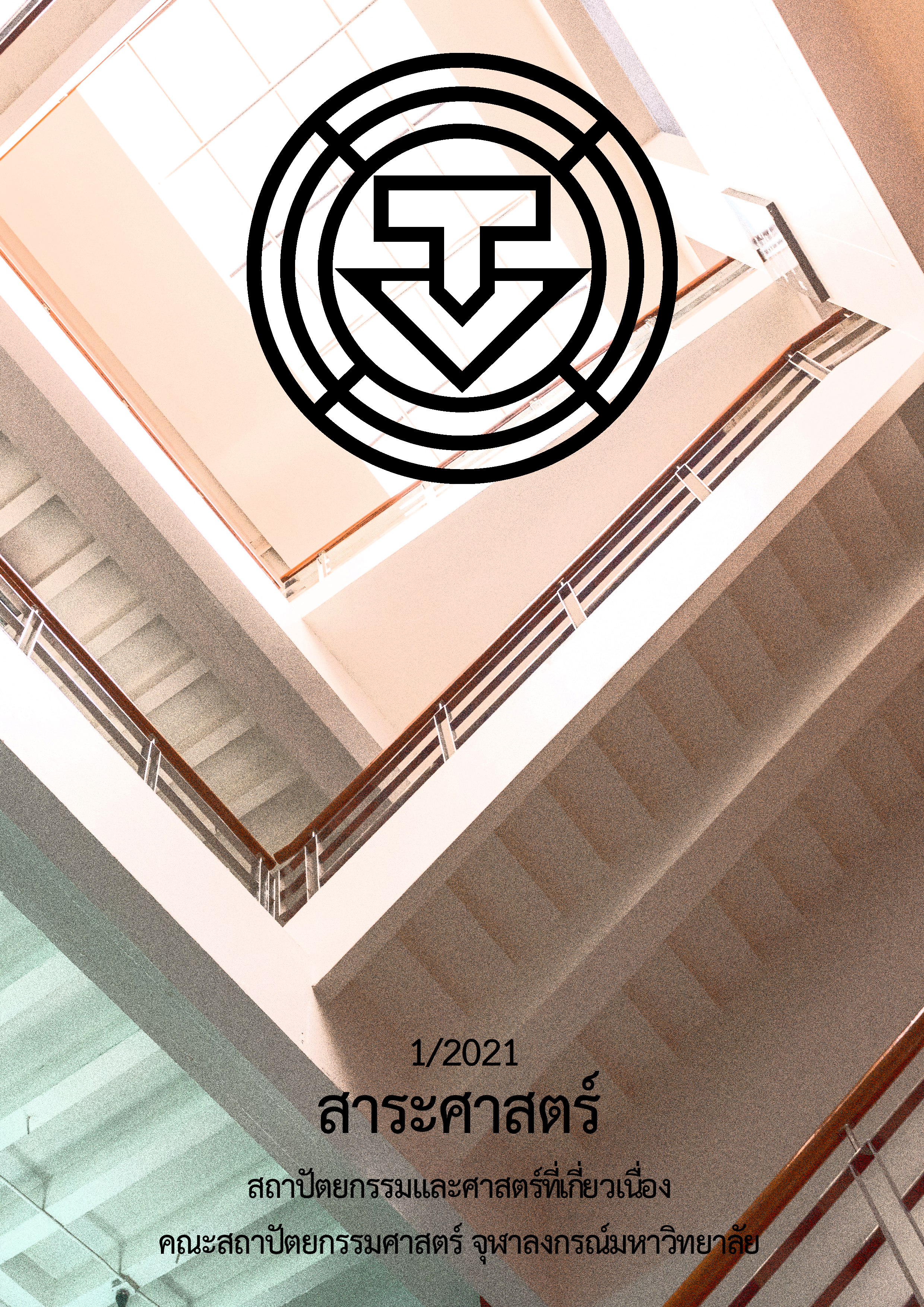Increasing the Green Areas of the City in Temple-Type Religious Sites: A Case Study of Chiang Mai Municipality
Main Article Content
Abstract
Rapid growth and expansion of urbanization has led to changes of land uses and insufficiency of green areas for supporting demands of urban people with the increasing trend in number. Therefore, empty lands in religious places become an alternative opportunity for development to expand urban green areas because temples are distributed in every community and they should be developed to be real green areas. The purpose of this research was to analyze urban green areas and spatial situations of the temples in Chiang Mai Municipality for expanding the urban green areas in religious places of temples. Regarding the research methods, fieldworks of a survey and an observation were used to compile the database of green areas, temples and community; and the geographic information system was used to analyze the green areas in Chiang Mai Municipality, and spatial situations of the temples in Chiang Mai Municipality. The analyzing results revealed the chances for urban green area development in the religious places of the temples due to the factors in locations, relation to community and school, connection of the existing green areas network, and empty land in the temples. The chances for development could be classified into two groups. In Group 1, chances for expanding the urban green areas were more than 60 percent on the empty lands in the religious places of the temples. In Group 2, chances for expanding the urban green areas were less than 60 percent on the empty lands in the religious places of the temples. The classification was in relation to the density of the surrounding communities and the connection to the green areas in the walking distance. The additional considerations were on the appropriate expansion of the green areas in the temples’ shrines, and utilization areas. The green areas could be further enhanced appropriately for recreation and landscape beauty; response to local contexts in communities, homes, schools, and temples for local people and visitors; and facilitation for walking, quality of life, and quality of urban environment
Article Details
References
กระทรวงมหาดไทย. กรมโยธาธิการและผังเมือง. สำนักพัฒนามาตรฐาน. กลุ่มงานมาตรฐาน. (2547). เกณฑ์ด้านผังเมืองหมวดบริการสังคม เรื่องสวนสาธารณะ สนามกีฬา ห้องสมุดและพิพิธภัณฑ์. กรุงเทพมหานคร: บริษัท รำไทย เพรส จำกัด.
เทศบาลนครเชียงใหม่. (2563). ข้อมูลด้านทรัพยากรธรรมชาติและสิ่งแวดล้อมของเทศบาลนครเชียงใหม่. สืบค้นเมื่อ 25ธันวาคม2563, จาก http://www.cmcity.go.th/cmcity/index.php/th/s-menu-detail3-th/91-g-cmtomography-th/101-c-environment-th
ประภัสรา นาคะ. (2551). การพัฒนาวัดเพื่อเป็นพื้นที่สีเขียวของเขตเมืองชั้นในกรุงเทพมหานคร. (วิทยานิพนธ์ปริญญามหาบัณฑิต, จุฬาลงกรณ์มหาวิทยาลัย).
ปริญญา ชูแก้ว. (2559). คู่มือการดูแลรักษาศาสนสถาน. กรุงเทพฯ: สำนักงานทรัพย์สินส่วนพระมหากษัตริย์.
มหาวิทยาลัยเทคโนโลยีสุรนารี. (2563). มาตรฐานพื้นที่สีเขียวในเมืองและชนิดพรรณไม้ที่เหมาะสมกับพื้นที่สีเขียว. สืบค้นเมื่อ 15 ธันวาคม 2563, จาก http://www.onep.go.th/eurban/plant/downloads/green.pdf
มูลนิธิสถาบันสิ่งแวดล้อมไทย. (2563). แนวทางการจัดการพื้นที่สีเขียวและมาตรฐานอัตราส่วนพื้นที่สีเขียวสำหรับชุมชนเมืองในประเทศไทย. สืบค้นเมื่อ 25 ธันวาคม 2563, จาก http://www.onep.go.th/wp-content/uploads/eurban-publication-01.pdf
สำนักงานนโยบายและแผนทรัพยากรธรรมชาติและสิ่งแวดล้อม. (2563). แนวทางการจัดการพื้นที่สีเขียวและมาตรฐานอัตราส่วนพื้นที่สีเขียวสำหรับชุมชนเมืองในประเทศไทย. สืบค้นเมื่อ 25 ธันวาคม 2563, จาก http://www.onep.go.th/wp -content/uploads/handbook-green.pdf
สำนักงานนโยบายและแผนทรัพยากรธรรมชาติและสิ่งแวดล้อม. กองสิ่งแวดล้อมชุมชนและพื้นที่เฉพาะ. (2563). คู่มือการจัดการพื้นที่สีเขียวชุมชนเมืองอย่างยั่งยืน. สืบค้นเมื่อ 20 ธันวาคม 2563, จาก http://www.onep.go.th/wp-content/uploads/eurban-publication-07.pdf
สำนักงานสถิติแห่งชาติ. (2562). สำมะโนประชากรและเคหะ พ.ศ. 2562. สืบค้นเมื่อ 25 ธันวาคม 2563, จาก http://www.nso.go.th/sites/2014/Pages/home.aspx


